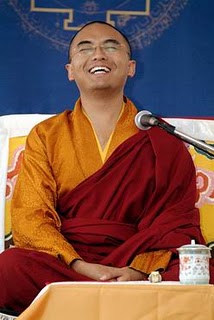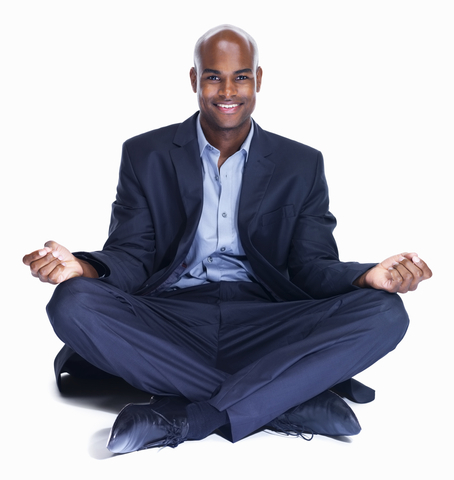What Is Meditation
When we hear the word “meditation,” we may imagine a robe-clad monk sitting still on a cushion in some high mountain retreat. Or, we may imagine a “new-agey” hipster sitting with legs crossed, fingers encircled, saying “om.” For some, meditation is something that we have to “do” or “become.” Within this model, we create a destination or state that we hope to achieve, separating ourselves from the state that we find ourselves in. But, nothing could be further from the truth…
In fact, the mind that we use to meditate with is the very same mind that “starts out” in a state of confusion and leads us to a state of meditation, and the qualities that permeate the “deluded” mind, cognizance and awareness, are the very qualities that bring us to a state of non-distraction, or meditation. How?
Recognizing Your Undistracted Mind
Don’t we notice that even when we’re spaced out or distracted, if we catch or find ourselves in this state, there is the “knowing mind” that knows that we’ve been spaced out or distracted. And, even when we’re in the middle of some chaotic state, or in an emotional state, there’s part of us that is able to witness what is going on? Try it. Watch yourself during the day and remember to take note of that aspect of your mind that is present, even if you’re not.
The problems that most of us beginners encounter as we attempt to meditate is that the very cause of our distractions, our untrained mind, is all that we’ve got to work with. It’s like trying to use two broken legs to walk to the emergency room; you just can’t get there…or can you? Staying with the metaphor of broken legs (ouch!) for just one more moment, even though our legs might not be working when they’re broken, their essential “leg-ness,” the fact that they are legs, never leaves us.
Try this; as soon as you find that you’re distracted, use the attention that recognized your distraction as the attention to bring you back to the moment. Use the awareness that recognizes your confusion as the very method of returning to a less-distracted state of mind.
Just Don’t Follow After Your Thoughts
What if the “place” where our true nature of mind is located is no other place than within our “greater” undistracted mind? What if, in fact, the true nature of mind is just obscured by the habits in our way of seeing? And what if our habits are no more than our way of thinking and our tendency to follow after thoughts, one upon another, until we make them seem very real. Then, that would mean that “all we have to do” is to sit and observe our mind without getting entangled with whatever arises.
Try this; let’s try not to follow any thoughts that arise, not following after past thoughts, anticipating future thoughts, or prolonging present thoughts. Let’s try to just observe our mind and that thoughts that arise within it, without grasping after the thoughts, without judging what arises.
There’s plenty of emerging and past research (aside from the millennia of first-person anecdotes) into meditation that proves even to the most skeptical of us that meditative and contemplative practices can free us from our habitual patterns of distraction and delusion. And, the sheer number of first-person accounts provides us with plenty of evidence that change can happen, that there are truly those who have been able to use their mind to extricate their mind from the patterns of distraction, finding a “natural” mind, free from distraction.
Let’s assume that this is the case, and for now, for today, or even for just this moment, let’s take all of the thoughts and assumptions that we have about things a little less seriously. With our thoughts, as one great master said, let’s be like a wise old person watching children play; amused but not particularly involved in the play. For today, for now, let’s not get caught up in our thoughts. Let’s “just dare” to take all of what we think and feel a little less seriously. As Mingyur Rinpoche (pictured above) does so easily, let’s laugh a little at our tendency to take our dramas so seriously…and see what happens!
This site has tons of tools for learning how to meditate and be compassionate.
I encourage you to look through the HUNDREDS of articles that I’ve written and especially check out my weekly meditation tips and other useful meditation materials provided for your health and well being. Please let me know if you’d like to discuss anything with me, have any questions or need clarification regarding anything that I’ve written about.
Other Great Meditation Resources and Information:
 For More Information on How to Meditate
For More Information on How to Meditate
Please view the Related Stuff below for help getting started in your meditation practice! Also don’t forget to download my free e-book, Can Meditation Change the Way that You View Your World? and download the free e-book, How to Work with the Four Distractions to Meditation and get started learning how to deal with some of the major obstacles in meditation.
As always, please feel free to share your comments on meditation and contact me if you’d like to see additional content or other discussions on this site.
[button color=”#fff” background=”#FF6600″ size=”medium” src=”http://www.mindingthebedside.com/contact-us/”]Contact Me[/button]



[…] again and again to a state of calm abiding can feel like “hard work.” And, in a way, it is. It’s hard because we’re not used to being undistracted. We’re so used to being swept away by the mere arising of a thought or emotion, that we find it […]
[…] to have some “secret” knowledge or special method.Since meditation is ultimately about remaining in a state of non-distraction there’s not so much to “do” as there is to “be.” So, if you say that […]
[…] Meditation is About Getting Used to Our (Undistracted) Mind […]
[…] again and again to a state of calm abiding can feel like “hard work.” And, in a way, it is. It’s hard because we’re not used to being undistracted. We’re so used to being swept away by the mere arising of a thought or emotion, that we find it […]